I remember the first time I had to move heavy construction parts across state lines. I had no clue which trailer to use.
That experience sent me down a rabbit hole of researching every trailer type available.
Since then, I’ve worked with freight partners, logistics teams, and warehouse managers to figure out what works and what wastes time. I’m not here to throw jargon at you. Just straight facts from the field.
In this article, I’ll walk you through what a container trailer is, how it works, the types you’ll find, and whether it’s the right fit for your business. By the end, you’ll know exactly what to expect from a container trailer and how to make the right decision.
If you’re looking for something that can carry real weight without breaking down halfway, this one’s worth your time.
Let’s get started!
1. What is a Container Trailer?
A container trailer is a flat trailer built specifically to carry shipping containers over land. Unlike general flatbeds or enclosed trailers, container trailers are designed to safely lock, support, and move standard container sizes like 20-foot and 40-foot units.
They’re commonly used in freight yards, ports, distribution centers, and by companies handling intermodal transport. If your operation deals with ISO containers or moves freight between ships, trucks, and trains, chances are you’re already dealing with container trailers—whether you realize it or not.
What makes these trailers stand out is their compatibility with standardized containers. They’re built to handle the container’s weight and dimensions without needing extra modifications or tie-down tricks. That saves time and lowers risk during loading and unloading.
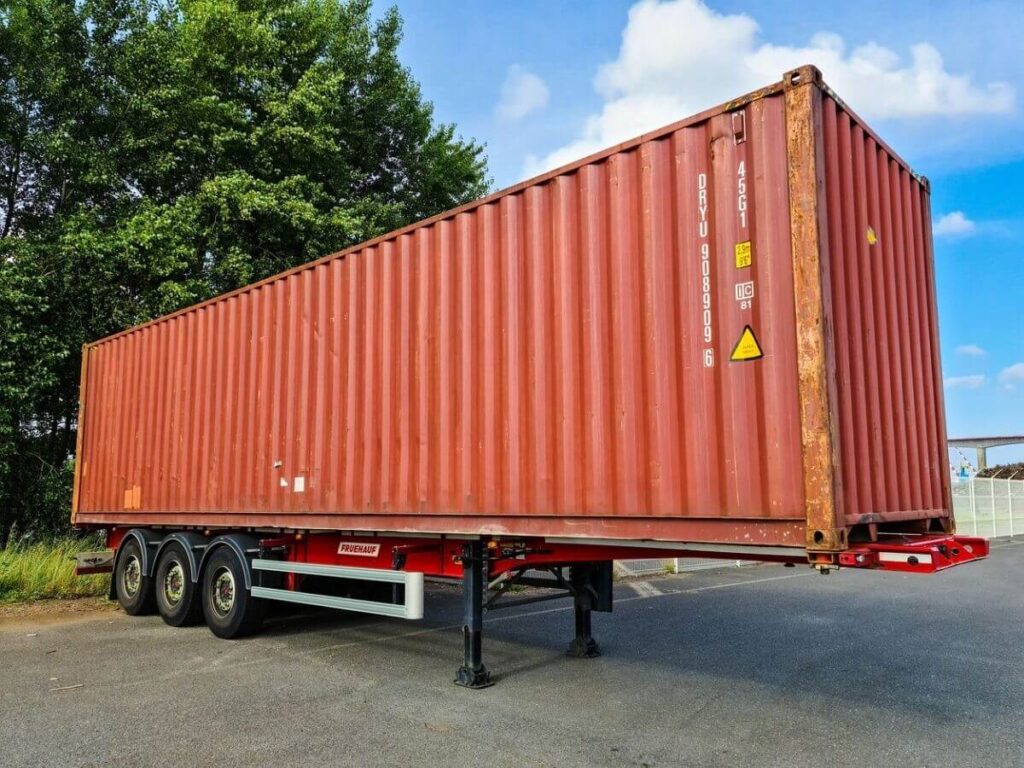
2. Key Components and Structure
Container trailers may look basic at first glance, but every piece of the structure serves a clear and functional purpose. If you’re moving containers regularly, knowing these components helps avoid delays and safety issues.
- Chassis Frame: This is the main support structure of the trailer. It carries the full weight of the container and provides overall stability during transport.
- Twist Locks: These are mechanical locks built into the trailer’s frame to secure the container. Once the container is placed, the locks twist into position and keep it from shifting.
- Landing Gear: This component supports the trailer when it’s not attached to a truck. It’s usually adjustable and built to handle the trailer’s weight during loading or parking.
- Axles and Suspension: These work together to carry the load and handle the stress of movement. A good suspension system also protects both the trailer and cargo from road impact.
- Container Guides: These are fixed metal guides at the ends of the chassis. They help line up the container during loading so it fits correctly onto the trailer.
- Brake System: Every container trailer includes a reliable air or hydraulic brake system. It’s essential for keeping everything under control, especially with full loads.
- Electrical and Lighting System: This includes brake lights, indicators, and wiring compatible with truck connections. It keeps the trailer visible and road-legal during transport.
- Tires and Wheels: Heavy-duty tires are mounted on steel wheels built for high loads. Regular inspection here goes a long way in preventing downtime on the road.
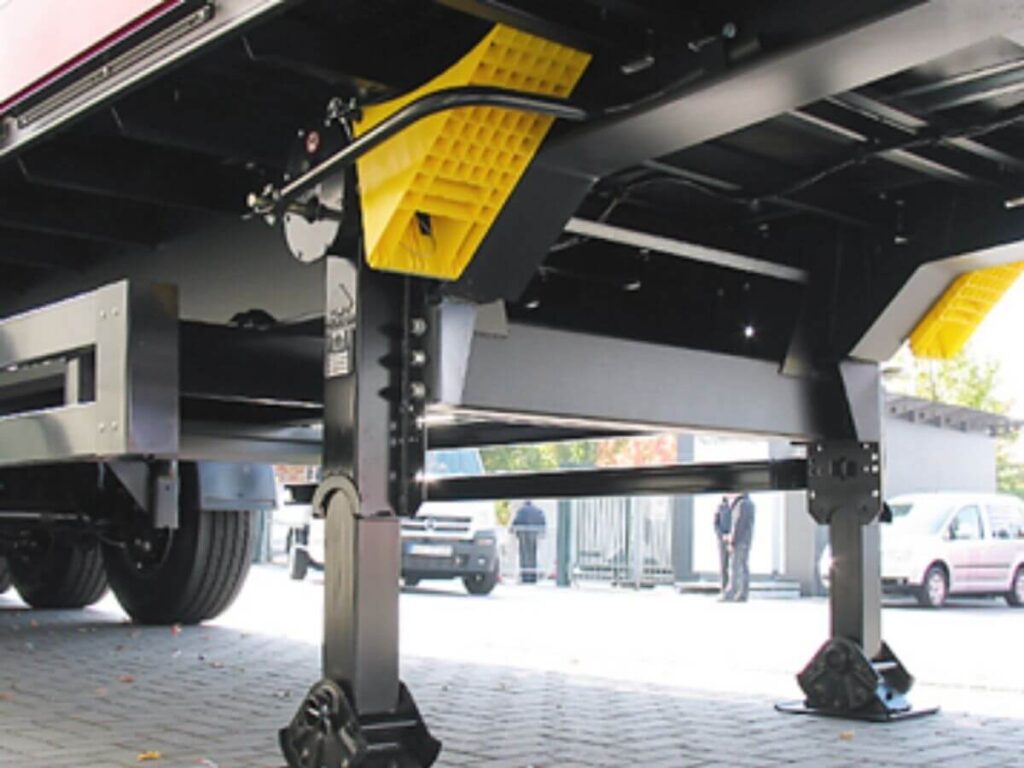
3. Common Types of Container Trailers
Not every container trailer works the same way. The right one depends on what you’re hauling, where it’s going, and how it’s being loaded.
- Flatbed Container Trailer: This is the most basic type, often used for general container transport. It has a flat, open deck and uses twist locks to secure the container. Because there are no sides or a roof, it allows for easy loading with a crane or forklift.
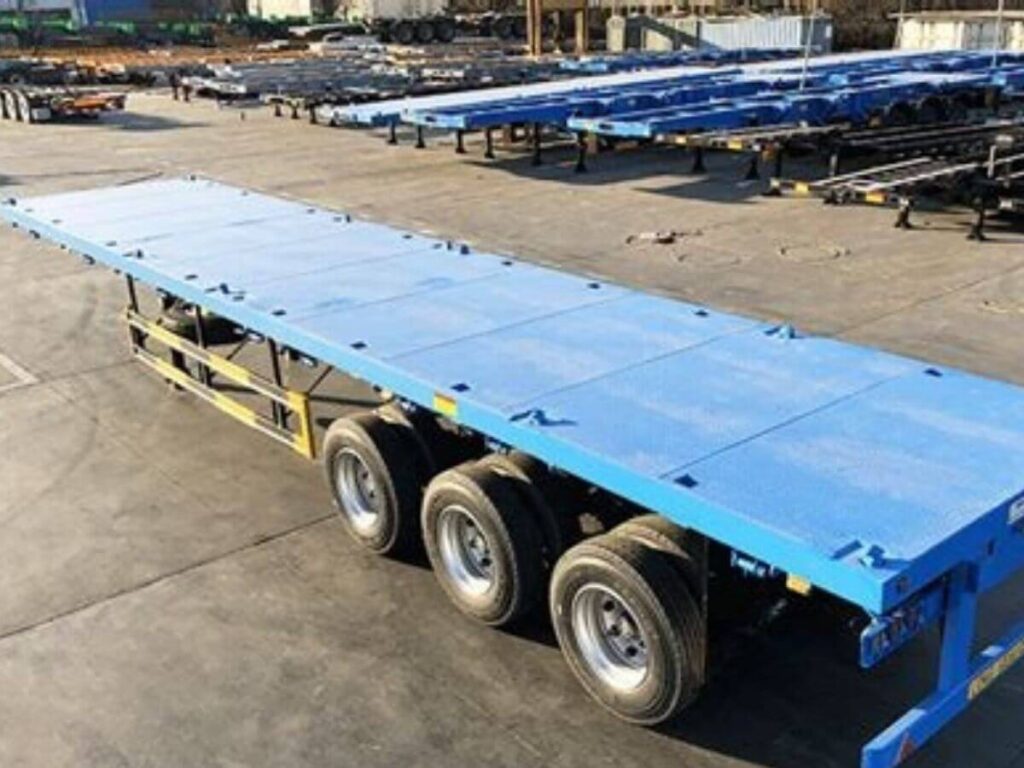
- Skeletal (or Skeleton) Trailer; Skeletal trailers are built with just a bare frame to hold the container. They’re lightweight and ideal for port or terminal use where the cargo is already in containers. Their simple design makes them cost-effective and easy to maintain.
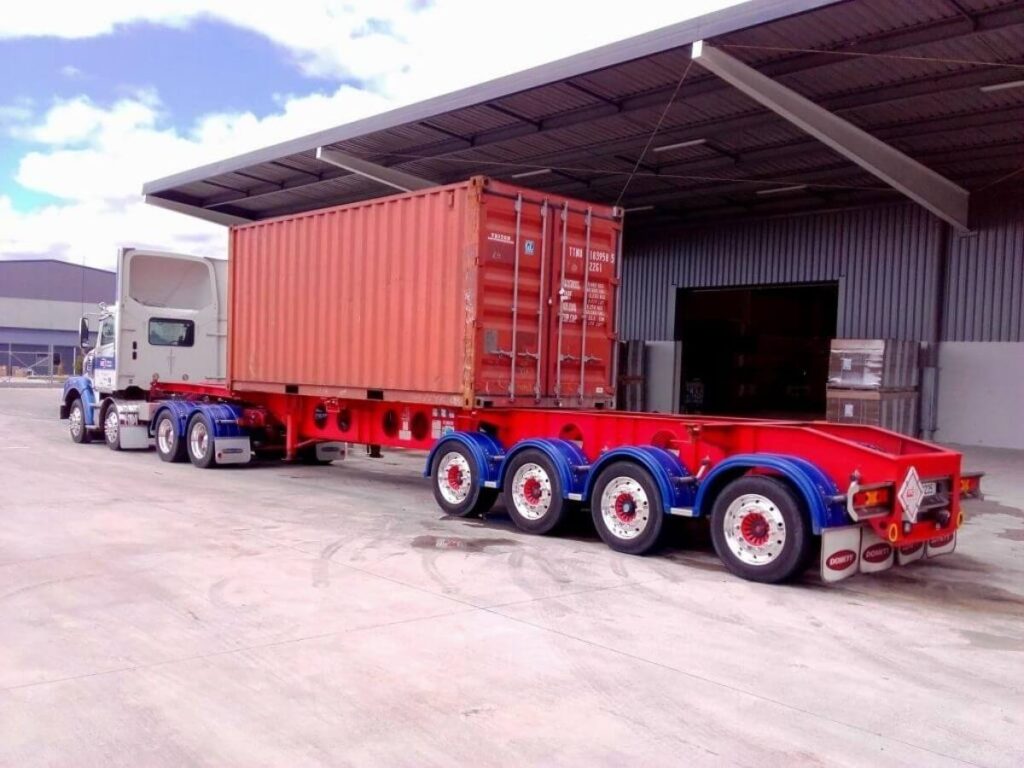
- Extendable Container Trailer: This type can adjust its length to fit different container sizes. It’s especially useful for businesses that handle both 20-foot and 40-foot units. When collapsed, it also saves space for parking or storage.
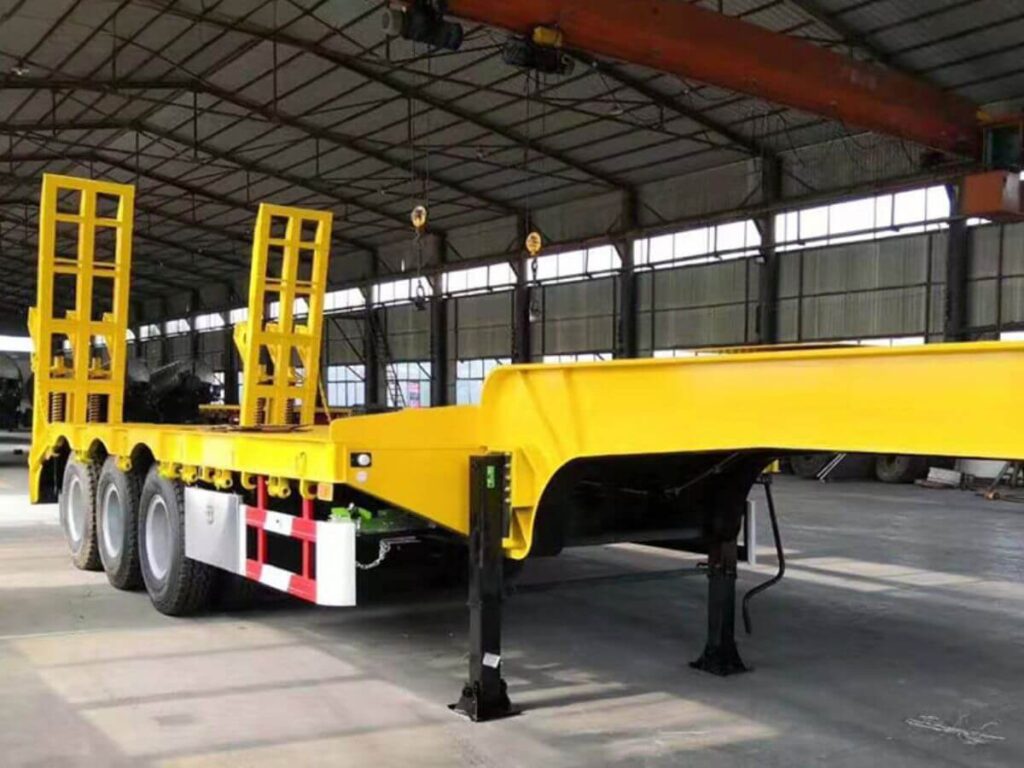
- Gooseneck Container Trailer: Gooseneck trailers have a lowered front section that allows the container to sit slightly lower. This helps meet height regulations on certain roads and keeps the load more balanced. They’re commonly used for heavier or taller cargo.
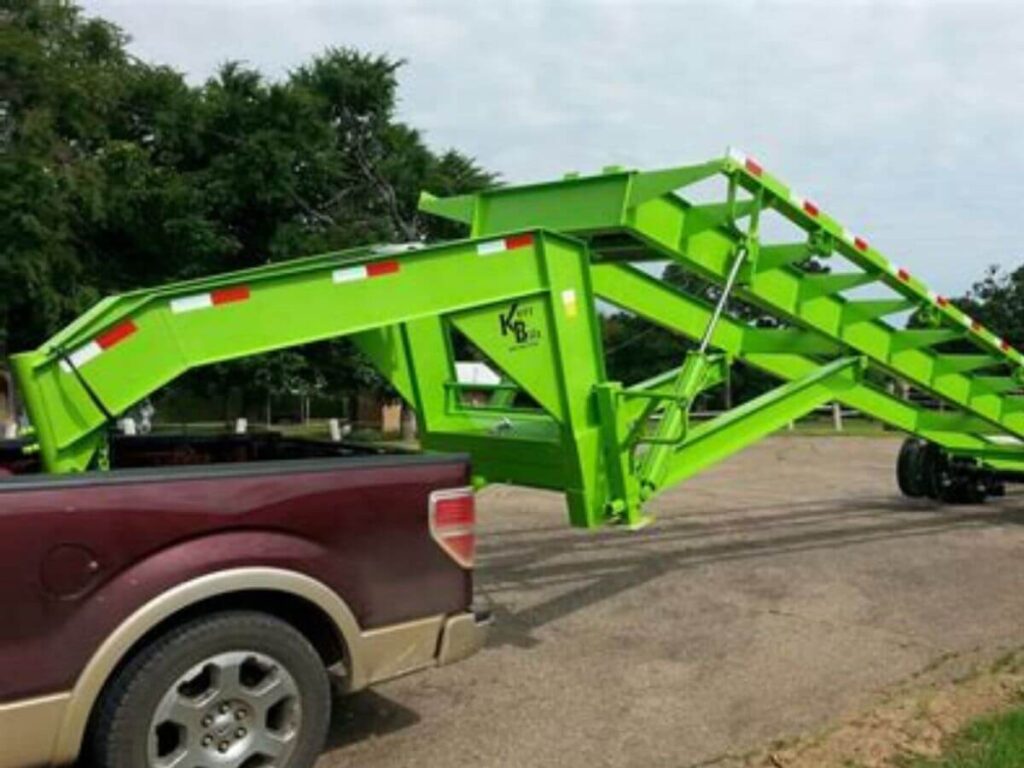
- Side Lifter Trailer: A side lifter trailer has built-in hydraulic cranes that lift containers on and off. It’s perfect when there’s no loading equipment available on-site. These trailers offer flexibility but tend to cost more.
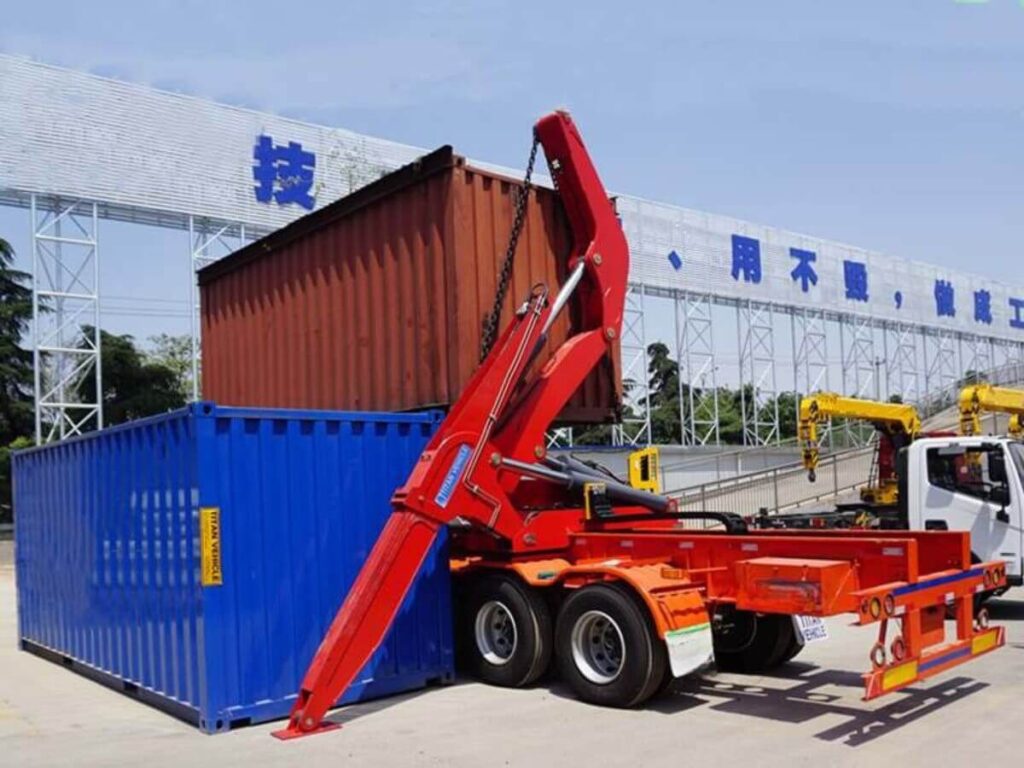
4. Advantages of Using a Container Trailer
If your business depends on shipping large volumes, container trailers can make life a lot easier. They’re built for efficiency, and once you start using them, the benefits show up fast.
Standardized Fit for Global Transport
Container trailers are built to handle ISO-standard containers, which are used around the world. That means you can move the same container from ship to port to truck without unloading anything. This saves time and avoids extra handling that could damage goods. It also helps streamline your logistics when dealing with international shipping. You get a smoother, more predictable workflow from start to finish.
Faster Loading and Unloading
When your trailer is designed specifically for containers, loading becomes quick and predictable. Twist locks make securing the container simple and fast. There’s no need for straps, chains, or custom tie-downs. This speed reduces labor costs and gets your trucks back on the road sooner. Over time, that adds up to real savings.
Lower Risk of Cargo Damage
Because the container stays sealed throughout the journey, your cargo is protected from the elements and human error. No extra handling means fewer chances for damage. The trailer itself supports the weight and structure of the container evenly. That kind of stability is especially useful for fragile or high-value shipments. It’s one less thing to worry about in a complex supply chain.
Flexible Options for Different Needs
There’s more than one kind of container trailer, and that gives your business room to adjust. Whether you need something compact, extendable, or self-loading, there’s a setup that fits. You don’t have to force one trailer into every job. Instead, you can match your equipment to your workload. That flexibility helps avoid costly compromises.
5. Uses and Applications of Container Trailer
Container trailers are more than just tools for moving boxes. They show up in all kinds of industries, quietly keeping shipments moving on time.
Port and Intermodal Transport
At ports and rail terminals, container trailers are the go-to option for moving cargo between ships, trains, and trucks. Since containers stay sealed, switching from one mode of transport to another is fast and low-risk. That efficiency helps reduce bottlenecks and keeps freight flowing smoothly.
Intermodal systems rely on standardized containers, and these trailers are built to match that need. It’s one of the simplest ways to handle large volumes with fewer delays.
Retail and Distribution Logistics
Big retail operations and distribution centers often depend on container trailers for high-volume shipments. Trailers can be pre-loaded off-site, then delivered just in time for unloading and stocking.
This method keeps warehouse space clear and reduces downtime. It’s also useful for seasonal surges or when multiple locations need coordinated deliveries. The more organized your trailer system is, the smoother your supply chain will run.
Construction and Industrial Shipping
For construction or industrial projects, container trailers are ideal for hauling equipment, tools, and prefab materials. The sealed container protects items from dust, rain, or theft during long trips or on-site storage. You can drop off a container at a job site and use it as a mobile storage unit. This adds flexibility while keeping materials secure and close at hand. It’s a reliable solution for complex projects with tight timelines.
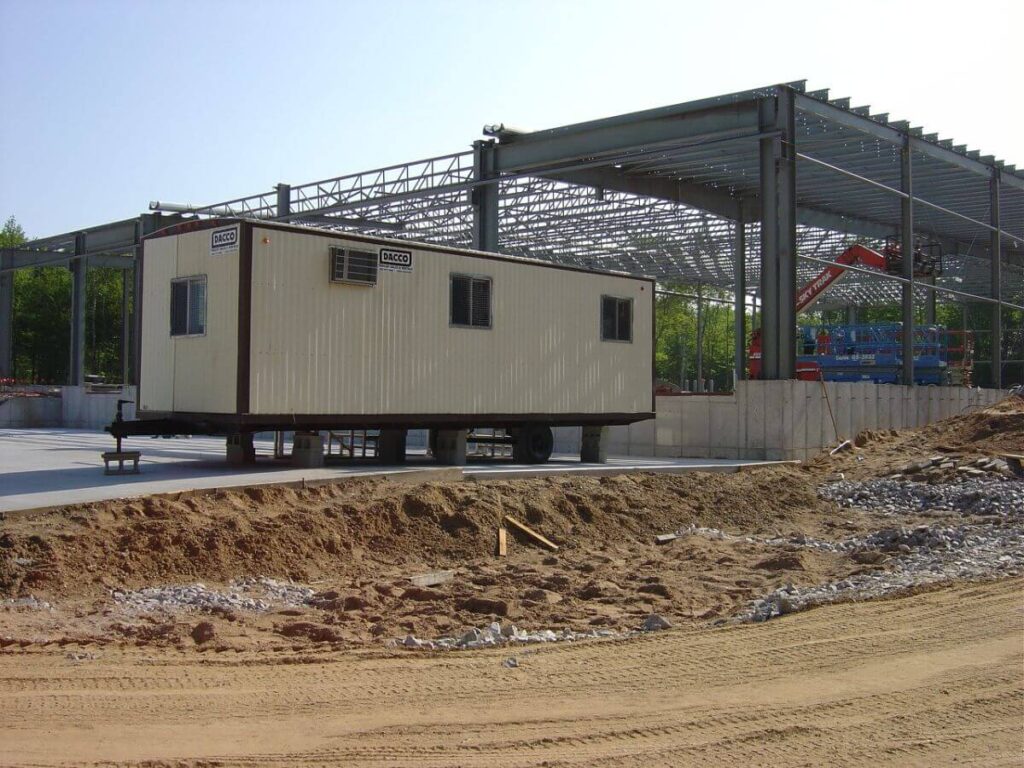
6. Container Trailer vs. Other Trailer Types
Choosing the right trailer can make a big difference in speed, safety, and cost. Here’s a clear breakdown comparing container trailers with other commonly used trailer types.
| Feature / Use Case | Container Trailer | Flatbed Trailer | Enclosed Trailer | Lowbed Trailer |
| Main Use | Moving standard ISO containers | Hauling various oversized or heavy loads | Protecting smaller cargo from weather | Transporting tall, heavy equipment |
| Loading Method | Top-loaded or crane-lifted | Side or top-loaded by forklift or crane | Rear loading through doors | Rear-loaded with ramps or cranes |
| Cargo Protection | Container provides sealed protection | Open to weather and theft | Fully enclosed and weatherproof | Partially exposed, not weatherproof |
| Flexibility | Fits only container sizes | Handles multiple cargo shapes | Limited to smaller packaged goods | Great for extra-tall or awkward cargo |
| Security Level | High (container remains sealed) | Low (requires straps and chains) | High (locked and enclosed) | Moderate (depends on setup) |
| Loading/Unloading Speed | Fast when equipment is available | Moderate with skilled crew | Slower due to manual handling | Slowest due to load complexity |
| Cost Efficiency | High for containerized freight | High for large, unboxed items | Moderate, ideal for smaller loads | Expensive to operate and maintain |
| Common Industries | Shipping, logistics, retail | Construction, agriculture, manufacturing | Events, small retail, moving services | Heavy machinery, energy, infrastructure |
7. Tips to Consider When Buying a Container Trailer
Buying a container trailer is a long-term move, so it helps to get the details right from the start. The right choice will save you time, money, and maintenance headaches down the road.
Match the Trailer to Your Container Sizes
Make sure the trailer fits the container sizes your operation handles most often. If you regularly move both 20-foot and 40-foot containers, consider a model that can adjust or extend. Using the wrong trailer length can create loading delays or leave you with underused space. Choosing the correct fit streamlines daily operations and helps reduce loading errors.
Check Frame Strength and Build Quality
The strength of the chassis makes a real difference, especially under full loads. Look for trailers made from high-tensile steel or other strong materials that can handle rough conditions. Weak frames can warp or crack over time, leading to costly repairs and downtime. Investing in better build quality now helps avoid bigger problems later.
Look at Brake and Suspension Systems
Safety starts with reliable brakes and a good suspension system. Air brakes are common and effective, especially for heavy container hauls. A smoother suspension also protects your cargo and reduces wear on the trailer. These features don’t just make driving safer—they keep your delivery schedule on track.
Think About Maintenance and Parts Access
Trailers that are easy to maintain keep your business moving. Go for models that use widely available parts, so you’re not stuck waiting on specialty components. Simpler designs with fewer custom features are usually easier to service in-house or at local repair shops. Long-term, that kind of accessibility helps reduce operating costs.
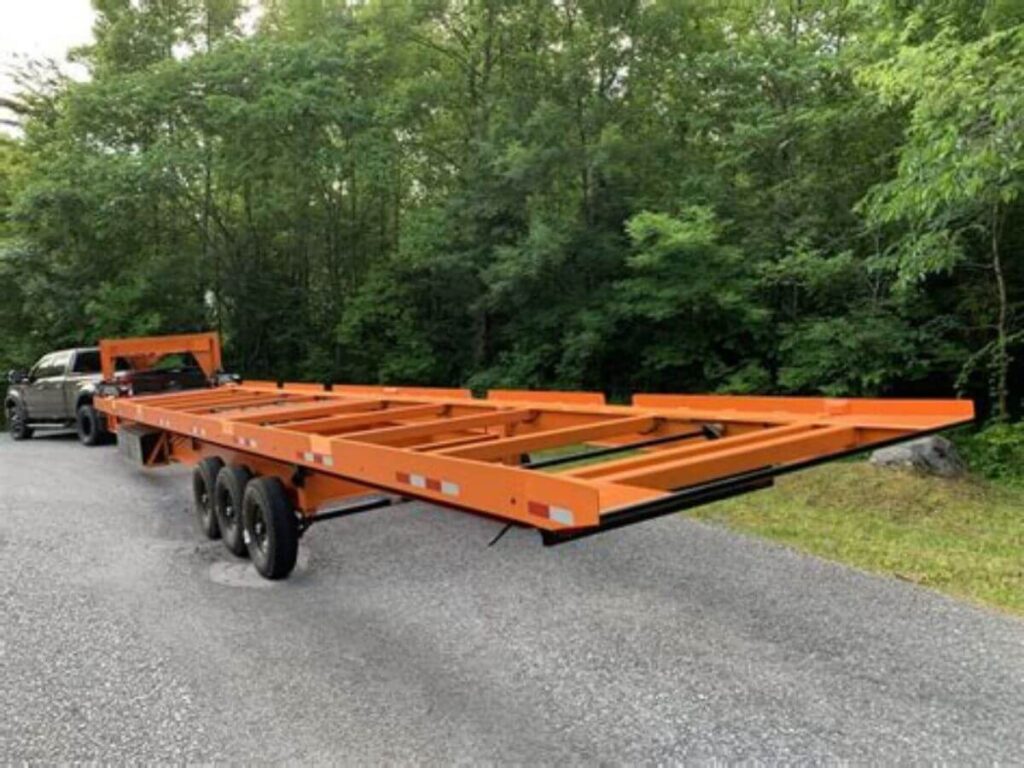
Conclusion
So now you know what a container trailer is.
What it does. Why it matters.
From structure and types to real-world uses, this guide walked you through everything you need to make a smart buying decision.
The first time I saw one in action, I knew I’d found something simple that just worked..
Need help picking the right model? Or want something built to last?
Contact Rhinotrail today. Let’s move your business forward together.


